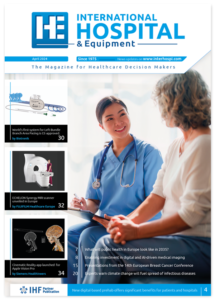How to identify high risk heart disease patients
A new study shows that magnetic resonance imaging (MRI) scans are the safest and most effective way to identify high risk patients with cardiac chest pain.
The research, funded by the British Heart Foundation (BHF), showed that cardiac MRI was better overall at predicting serious events, such as death or heart attack, following chest pain suspected to be angina.
The researchers from the University of Leeds carried out a five-year follow-up study in 750 people, to find out the best way of separating patients based on whether they were at high- or low-risk of serious heart events.
They compared MRI scans, a non-invasive test which does not use potentially dangerous radiation, with SPECT, a procedure which uses ionizing radiation and is commonly used in the diagnosis of coronary heart disease.
Coronary heart disease (CHD), the world’s biggest killer, is responsible for nearly 70,000 deaths in the UK each year, an average of 190 people each day, or one death around every eight minutes.
Most deaths from CHD are caused by a heart attack. CHD occurs when the vital arteries which serve the heart are narrowed or blocked by a build-up of fatty tissues. This can cause chest pain, or angina, which can lead to a heart attack if left untreated.
When a person has suspected angina, they are most likely to be tested with either an X-ray angiogram, an invasive procedure which uses a type of radio-opaque dye to image the inside of the arteries, or SPECT, a non-invasive procedure which also involves ionizing radiation. Ionizing radiation is damaging to living cells.
In contrast, MRI scans use strong magnetic fields and radio waves to produce a detailed image of the inside of the body, and are already widely used to help diagnose other medical conditions.
The paper resulted from a large five year follow-up study and follows a series of papers from the original CE-MARC (Clinical Evaluation of MAgnetic Resonance imaging in Coronary heart disease) study.
These papers have contributed to the growing body of evidence that cardiac MRI is the best option for the diagnosis and management of patients with coronary heart disease.
Earlier evidence from this BHF-funded study also showed that MRI is more cost-effective than SPECT in the diagnosis of coronary heart disease.
This research is expected to inform future clinical guidelines for the investigation of stable coronary heart disease. In doing so it could ease pressure on the NHS as only one hospital appointment is required for MRI, compared with two for SPECT.
Professor John Greenwood from the School of Medicine, who led the research, said: ‘Although SPECT is currently more widely available than MRI, the use of MRI across a wide spectrum of diseases means that it will be much more readily available for heart disease investigation in coming years.
University of Leeds http://tinyurl.com/z7cc2ny

